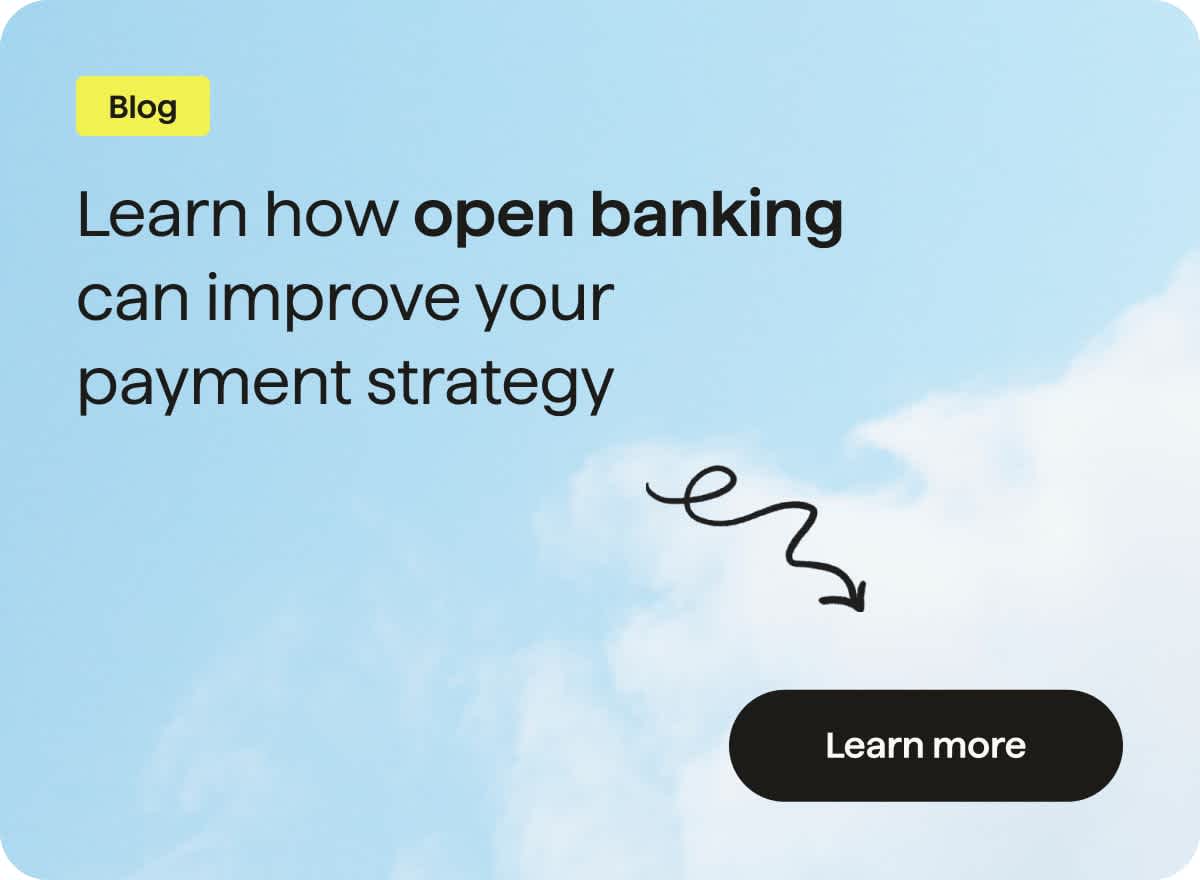
How “Buy, Now Pay Later” uses open banking
Last editedMay 20235 min read
Open banking refers to the practice of sharing financial data between different financial institutions or third-party providers using open APIs. This has led to the emergence of innovative financial products and services such as Buy Now, Pay Later (BNPL) that offer convenience and flexibility to consumers.
In this article, we will discuss the importance of open banking in BNPL and how it can benefit both consumers and merchants.�
Importance of open banking in BNPL
Open banking has played a significant role in the growth and popularity of BNPL services. BNPL allows consumers to split their payments into smaller, interest-free instalments over a period of time. This has made it easier for consumers to afford expensive purchases without having to pay the full amount upfront.
One of the main advantages of open banking in BNPL is that it allows for faster and more efficient credit assessments. By accessing a consumer's financial data through open APIs, BNPL providers can make faster and more accurate credit decisions. This has made it easier for consumers to access credit and for merchants to offer more flexible payment options.
Open banking also allows for a more seamless payment experience for consumers. By integrating with multiple financial institutions and payment providers, BNPL providers can offer a more convenient and streamlined payment process. This has led to higher conversion rates and increased customer satisfaction.
Benefits of open banking in BNPL for consumers
For consumers, open banking in BNPL offers several benefits. Firstly, it allows for faster and more convenient credit assessments, which means that consumers can access credit more quickly and easily. Secondly, it allows for more flexible payment options, which makes it easier for consumers to manage their finances and budget their payments. Finally, it offers a more seamless payment experience, which saves consumers time and effort.
Benefits of open banking in BNPL for merchants
For merchants, open banking in BNPL offers several advantages. Firstly, it allows for faster and more accurate credit assessments, which means that merchants can offer credit to more customers and reduce the risk of bad debt. Secondly, it allows for more flexible payment options, which makes it easier for merchants to attract and retain customers. Finally, it offers a more streamlined payment process, which reduces the risk of payment failures and increases customer satisfaction.
Buy Now Pay Later (BNPL) has become a popular payment option for consumers over the last few years. It allows customers to pay for their purchases in instalments, often with no interest or fees attached. This payment option has proven to be a popular choice, especially among younger generations, and has been adopted by many retailers.
Open banking, on the other hand, is a relatively new concept that allows consumers to share their banking data with third-party providers through APIs (Application Programming Interfaces). This enables consumers to use new financial services, such as budgeting apps, that can access their transactional data and provide personalised advice and recommendations.
So how do BNPL companies use open banking to improve their services?
Access to transactional data
BNPL providers can use open banking APIs to access a customer's transactional data, which provides valuable insight into a customer's spending habits, creditworthiness, and ability to pay back their instalments. By having this information, BNPL providers can make more informed decisions on whether to approve a customer for a BNPL loan, the credit limit to offer, and the repayment terms.
Seamless user experience
With open banking, the customer can authenticate their bank account and share their transactional data with the BNPL provider. This creates a seamless user experience and eliminates the need for the customer to manually enter their bank details, which can be time-consuming and prone to errors.
Eliminate fraud detection
Open banking can also help BNPL providers to detect and prevent fraud. By having access to a customer's transactional data, they can identify any unusual or suspicious activity that could indicate fraud. This can be particularly useful when verifying the customer's identity and ensuring that the loan is being taken out by the correct person.
Personalised offers and recommendations
Finally, open banking can enable BNPL providers to offer personalised recommendations and tailored offers to their customers. By analysing a customer's transactional data, they can identify patterns in their spending behaviour and suggest BNPL loans that are tailored to their specific needs and financial situation. This not only provides a better user experience but also helps to increase customer loyalty.
Successful case studies for BNPL
Here are some case studies of successful BNPL services using open banking.
Klarna
Klarna is a Swedish fintech that offers BNPL services to customers in Europe and the US. Klarna's open banking service, which they call "Pay in 4," allows customers to split their payments into four equal instalments, paid bi-weekly. Klarna's API enables customers to verify their identity and payment details quickly and securely, reducing friction in the payment process.
Klarna's success can be attributed to its ease of use, low fees, and streamlined payment process. By leveraging open banking technology, Klarna has been able to offer an even more convenient and secure payment option to its customers.
Afterpay
Afterpay is an Australian-based BNPL service that allows customers to split payments into four instalments. Afterpay's open banking service, known as "Money by Afterpay," provides customers with real-time information about their spending and payment options. By accessing customers' bank account information through APIs, Afterpay can provide more accurate and up-to-date information to customers about their available funds.
Risks associated with BNPL and open banking
One of the main risks associated with BNPL is the potential for consumers to accumulate debt. Since BNPL services offer the ability to make purchases without immediate payment, consumers may be more likely to overspend and accumulate debt that they cannot afford to repay. This can lead to financial difficulties, including high-interest charges, late fees, and damage to credit scores.
Another risk of BNPL is the potential for fraud and identity theft. As consumers provide personal and financial information to BNPL providers, there is a risk that this information could be compromised and used for fraudulent purposes. Additionally, consumers who sign up for BNPL services may be required to provide access to their bank accounts or credit card information, which could be exploited by cybercriminals.
Future trends and developments
In this blog section, we will explore some of the possible future trends and developments in the relationship between BNPL and open banking.
Increased regulation and scrutiny
As BNPL and open banking become more popular, we can expect to see increased regulation and scrutiny from governments and regulators. This is because these new payment methods and data-sharing practices can pose potential risks to consumers, such as debt accumulation and data privacy breaches. Therefore, we can expect to see more stringent regulations and guidelines being implemented to protect consumers.
Integration with digital wallets
Digital wallets have become increasingly popular in recent years, and we can expect to see BNPL and open banking services integrating with these platforms in the future. This would allow consumers to access these payment options directly from their digital wallets, making the payment process even more seamless and convenient.
Increased focus on sustainability
Sustainability is becoming an increasingly important issue for consumers, and we can expect to see services focusing more on sustainability in the future. This could include offering incentives for consumers who choose environmentally-friendly options or partnering with sustainable brands.
Collaboration with fintech startups
Fintech startups have been at the forefront of innovation in the finance industry, which means there is potential for services to collaborate with these startups in the future. This could include partnerships to offer new payment options or data-sharing practices, as well as acquisitions to expand services and capabilities.
Greater use of artificial intelligence
Artificial intelligence (AI) has the potential to transform the finance industry, leveraging AI in the future. This could include using AI to personalise payment options based on consumer behaviour, predicting fraud, or analysing data to improve services.
Expansion into new markets
Finally, we can expect to see BNPL and open banking services expanding into new markets in the future. As these payment options become more popular, we may see them being adopted in new regions around the world, potentially leading to even more innovation and growth in the industry.




